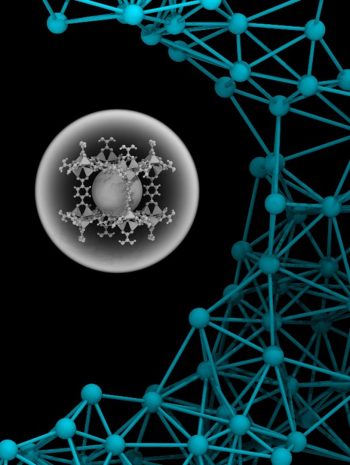Professor Mohamad Moosavi (ChemE) is harnessing the power of AI to accelerate the discovery of new materials to combat climate change. New funding from the Joint EMHSeed and XSeed Funding Program will help him expand his research on the application of novel metal-organic frameworks (MOFs) in carbon capture and storage — specifically, identifying and developing materials that are most effective at absorbing CO2 within their chemical structure and separating it from molecules of other gases, such as those that flow through exhaust pipes and the smokestacks of industrial facilities.
MOFs are attractive because of their high chemical tunability. By adjusting the chemical composition, scientists can optimize the material’s ability to select for one molecule or another — but the number of potential combinations is breathtaking.
Since the first MOFs were synthesized in the early 2000s, the number of reported structures has surpassed 100,000, presenting a significant challenge in selecting the most suitable options for specific applications.

To address this challenge, Moosavi is incorporating the use of AI, including large language models, to compile and analyze vast amounts of MOF data into a database. He hopes that these tools will accelerate the discovery and design of MOFs for various applications, including carbon capture, conversion and storage.
“We have an immense number of materials to choose from for carbon capturing, and the challenge lies in quickly selecting the most effective ones,” says Moosavi.
“This is something that was previously not possible without the use of AI. By integrating AI and machine learning into this process, we can narrow down the vast array of options and identify the best candidates for real-world applications, significantly speeding up the process.”
In a recent paper published in the scientific journal Nature Materials, Moosavi outlines his collaboration with Professor Anatole von-Lilienfeld (MSE, Chemistry) to develop a new database of MOF materials and their properties that can serve as a test bed for AI analysis.
The database aims to dramatically expand the range of available materials’ properties and enhance the accuracy of available data to the quantum level. It will be made publicly available through the Open Quantum MOF Database to enable AI-guided design and discovery of MOFs for a wide range of applications in the future.
Moosavi has embarked on another collaboration with Dr. Robert Black at the National Research Council to address another critical question: what should be done with captured carbon?
In this endeavor, he is developing AI algorithms that guide robotics platforms in finding the ideal materials — for example, new types of catalysts — to convert captured CO2 into useful substances, such as fuels. This research can potentially increase the value of captured carbon, transforming it into an economically viable resource.
“AI is the method we need to employ to address our time’s pertinent climate change concerns. By harnessing the power of AI, we can expedite the discovery and implementation of solutions, getting us closer to our goal of a sustainable and carbon-neutral future,” says Moosavi.
“Canada is poised to make significant strides in mitigating climate change, leaving a lasting impact on future generations and inspiring the world to follow suit.”



